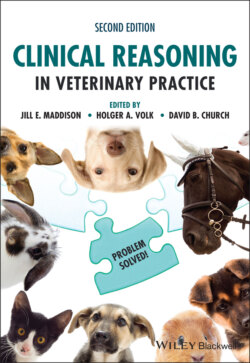Читать книгу Clinical Reasoning in Veterinary Practice - Группа авторов - Страница 37
Are the steps always in the same order?
ОглавлениеThe order in which the problem, system, location and lesion are defined may change for some problems.
For example, when assessing coughing and diarrhoea, identifying the location occurs before identifying the system, as location identification helps identify the system (discussed in more detail in Chapters 4 and 9).
For some problems, for example, pruritus (Chapter 15), you might go straight from problem definition to seeking to define the lesion.
However, for almost all clinical problems, answering some or all of the four questions – What is the problem? What system is involved and how? What is the location of the lesion? and What is the lesion? – will provide a framework to guide your clinical reasoning and diagnostic and therapeutic decisions.
Thus, instead of thinking when faced with a vomiting patient, ‘I wonder if it has a gastric foreign body or renal failure or a liver tumour?’, your initial energies are directed at defining the problem and system, which will help make your list of differentials (which are usually the location and/or lesion) logical, appropriate and given appropriate priority. In this way, the diagnosis is made thoughtfully, and during the process, all diagnostic options can be considered as the need arises.
